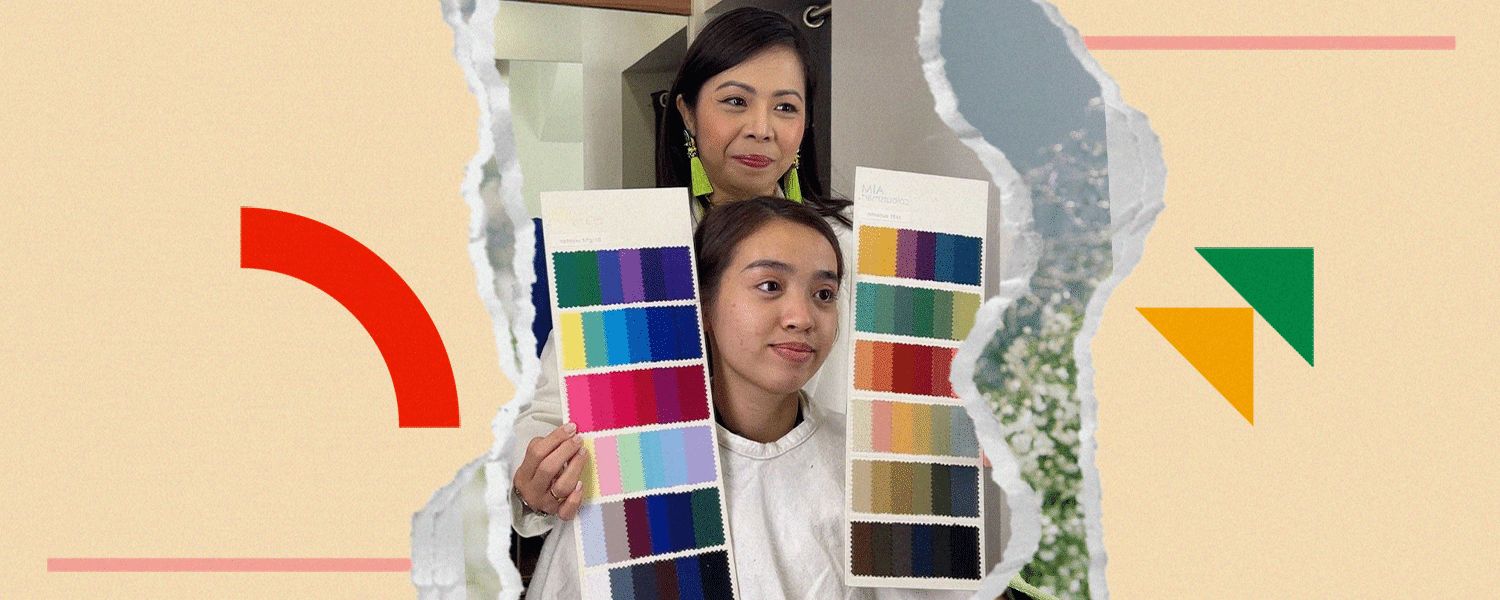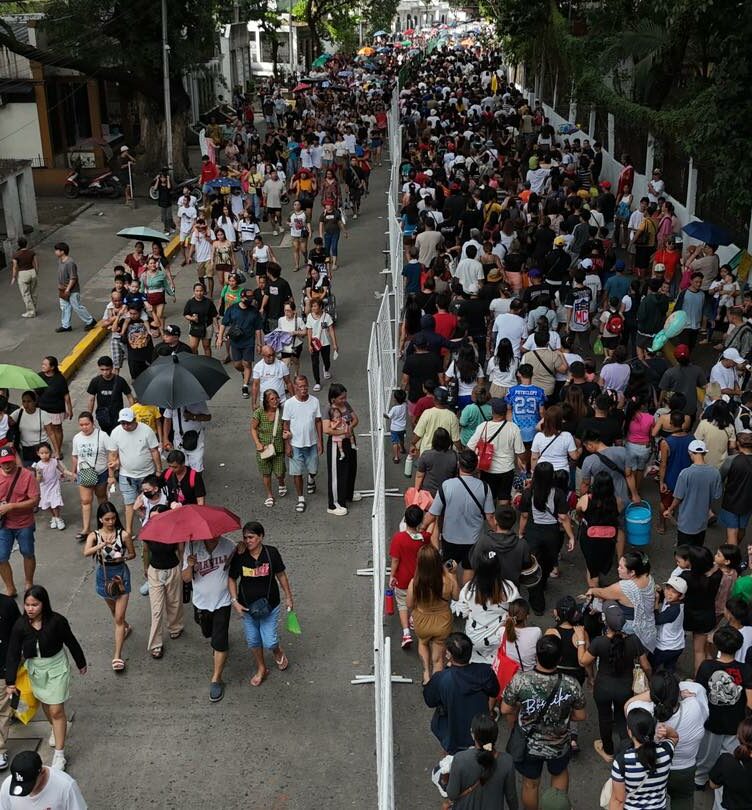SHOPPING for clothes and other wearables has been one of the ways for some individuals to destress. Whether it’s for a special occasion or a reward to themselves for surviving the week, they feel sheer joy and excitement whenever they buy something for themselves.
But at some point, shopping can also be exhausting and time-consuming. While it is nice to have a wide selection of choices, the dozens of racks at a store confuse the shoppers, especially if they don’t exactly know what they will get.
It’s hard to know where they should start or what clothes they should try first; not all shoppers have the luxury to fit everything on or buy a certain design in different colors. There’s one way to save time and money when shopping — and that’s knowing the best colors that suit them.
The key to knowing this is color analysis.
What is color analysis?
If you’re a frequent TikTok user or a huge K-pop fan, you might have heard about color analysis.
Color analysis is a method used by image and certified color consultants to determine what colors harmonize with a person’s natural coloring.
A lot of K-pop idols had tried this method, and since there are many Filipino K-pop fans, color analysis also gained traction in the country.
Republicasia’s digital producer Jessica Luna learned about color analysis through a Korean television show. She initially thought that it was a technique that originated in South Korea.
While South Koreans contributed big time to its popularity, particularly among the new generation, it is not their new discovery.
An old practice
Image and Certified Color Consultant Ingrid Nieto-Pagulayan told republicasia that color analysis has been existing since the 1960s. It became more popular in the 1980s when books such as Color Me Beautiful by professional color consultant Carole Jackson and Color Me a Season by color theorist Bernice Kentner were published.

“It’s gone through many developments. It’s really about discovering a person’s color temperature, intensity, and color value,” Pagulayan said.
The colors must be in line with a person’s authenticity and goals, and of course, must make their appearance look best, she said.
She explained that colors can be easily understood if they are categorized into seasons, which are autumn, fall, summer, and winter. These color sets are arranged by their temperature, intensity, and color value.
There are also subcategories under the seasonal colors. For spring, there are what consultants called bright spring, warm spring, and light spring. Under autumn are warm autumn, soft autumn, and deep autumn.
On the other hand, winter has cool winter, deep winter, and bright winter, and summer has cool summer, soft summer, and light summer.
“Basically, it’s really just looking at a person’s color temperature, yung color intensity nila, and then their color value,” Pagulayan said.
But as a color consultant, she also factors in her client’s physical features and color patterns since these vary for each person.
Color preference
Pagulayan understands that each person has their own color preferences; however, not all of these colors would have a positive impact on their appearance.
“Baka naman kasi yung effect niya hindi maganda. ‘Di maganda in the sense na it makes you look ashen, it makes you look so sallow, parang ‘di ka nakatulog. ‘Di ka mukhang fresh. Or it tends to overwhelm you,” she said.
Wrong color choices could send a different nonverbal message to others that is inconsistent with who they really are as a person. Pagulayan shared that this had happened to her before she got into color analysis.

Other people would tell her that they thought she was unapproachable because of the way she presented herself to the public wearing clothes that were in jewel colors, she recalled.
“When I discover na dito pala ako sa bright spring, there was a surprise and there was a bit of, ‘Ah talaga? Ganun ba yun? Pero gusto ko ‘to eh,’” she said.
Color consultation can give both a good and bad surprise to a person.
Pagulayan said that it’s a good surprise people discover that the colors they usually don’t wear can actually flatter them most. Meanwhile, a bad surprise could mean that their favorite colors are not really the best ones for them.
Knowing the right colors
To discover more about her colors, Luna did a color consultation with Pagulayan at John Robert Powers in Quezon City.

Luna is somebody who is into neutral colors, and would always pick clothes that are white or in light shades.
“I have this feeling na hindi bagay sa akin ang dark and heavy-looking colors,” Luna said.
She added that she’s more comfortable wearing light-colored clothes due to the country’s hot weather.
“I personally love white because for me, aside from its cooling effect, it gives any person that ‘clean’ vibe and it never fails me,” she said.
This doesn’t mean that she does not wear any dark-colored clothes. For instance, republicasia has a black uniform that staff members wear, especially during coverage of events.
Before Luna’s color analysis session began, Pagulayan prepared the color drapes which are specifically calibrated to help determine Luna’s color temperature, color intensity, and color value.

She also prepared a variety of color boards and drapes with prints which, she said, is very important to discuss with her clients.
Some color consultants would hide their client’s hair with a white cloth, but in Luna’s case, Pagulayan did not do so since she did not find her hair color distracting.
Pagulayan placed the drapes on Luna’s chest, and carefully assessed these one by one.
Luna herself noticed how her skin would glow or gloom with each color.
“I am honestly surprised that one shade can show a huge difference on my skin. I discovered that my interest in warm colors is not just because I like it but it is actually the colors that match my skin,” she said.
“Also, I have to be careful in choosing dark colors because there are shades that make my appearance too strong and deep,” she added.
The process of analyzing each color went on until Pagulayan concluded that the best color palette for Luna is soft autumn.
“The results of my color analysis procedure would greatly improve my selection in clothes, hair color, cosmetics, etc. especially in my line of work where I always have to put effort in making my appearance look best,” the digital producer said.
How beneficial is it?
Finding the right color for her would also save her more time, money, and effort, Luna said.

This is one of the many benefits of knowing the best colors for them, according to Pagulayan.
“It’s going to be so much easier when you dress up in the morning, when you go shopping, ‘di ka na nalilito,” she said.
She also noted that not everyone can spend three to five hours shopping, trying to look for clothes in a store that would look good on them. But when they know their color palette, they already have the idea of what clothes they would get or try on.
“It limits you but you use it as guidance kasi pagpunta mo na nga ng store, ‘Oh okay, I can see the racks pretty much. Ito siguro pwede.’ Tsaka mo lang ita-try,” she said.
This would also help people in styling their clothes. It would help them identify what color would go well with each other and determine what vibe they want to project for the day.
It is important to note that color analysis does not only apply to clothes, but it can also be used when choosing your hair color and makeup palette, among others.
How useful was this post?
Click on a star to rate it!
Average rating 0 / 5. Vote count: 0
No votes so far! Be the first to rate this post.
We are sorry that this post was not useful for you!
Let us improve this post!
Tell us how we can improve this post?






